Renegade Map might just be one of the best commons in Aether Revolt.
Boom. Mic drop.
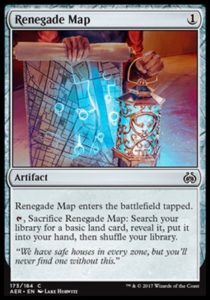
What the What?
It seems absurd that a glorified Wanderer`s Twig could be one of the best commons in a set. Sure, it’s colorless and has synergies, but why should it deserve such high praise? Obviously, the best common is a removal spell like Shock or Daring Demolition, right? Possibly, yes, but there are some good arguments for why the map is a stronger pick.
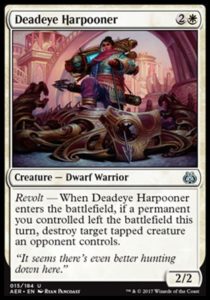
Revolt
The most obvious use for Renegade Map is enabling Revolt. It’s one of the only ways to enable Revolt without spending mana, hoping your opponent blocks, or sacrificing a resource to something like Defiant Salvager.
A turn one Renegade Map enables revolt on curve on any future turn of the game. Revolt is a very powerful ability, usually worth a card by itself: getting a 2/2 (Lifecraft Cavalry), a servo with (Countless Gears Renegade), and, er, drawing a card off Silkweaver Elite are all worth about a card. Because the map replaces itself, it becomes a kind of Krosan Tusker—for the low cost of one mana, you draw a land and get’s a card’s worth of effect. That’s a whole lot of power in an unassuming package.
Or, to put it another way, Attune with Aether is one of green’s best commons in Kaladesh. It’s so good because it gives you a card with an additional effect (which requires other cards into order to do anything). Renegade Map is like that, but goes into every deck.
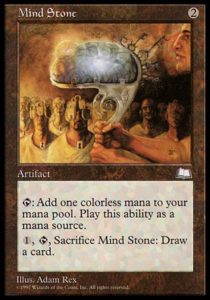
Improvise
The existence of Improvise makes all inexpensive artifacts more valuable. In the right deck, Renegade Map is a Mind Stone that you can cash in for a card (and hopefully trigger Revolt along the way). That’s a whole lot of power for one mana.
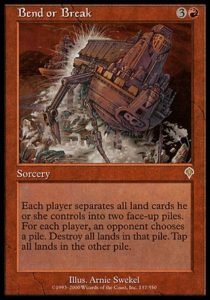
Flexibility
Colorless cards are innately better than colored cards because they can go into any deck. This is why colorless cards tend to be more expensive and weaker than colored cards, and also why gold cards tend to be stronger than monocolor cards. Normally, Renegade Map wouldn’t be anything to write home about—sure it’ll go into practically any Limited deck you’d create (making it a very safe pick), but absent turning on revolt, it isn’t really doing anything (which doesn’t justify a high pick). Except turning on revolt can be very strong. Additionally, there’s something about the format which makes the map even more appealing.
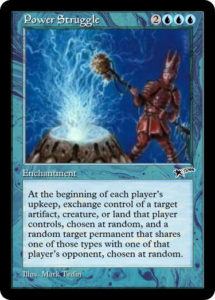
Power Level
Aether Revolt has a lower power level than Kaladesh does. Its commons just aren’t as strong as Kaladeshi commons. The speed of the format is just a little bit slower, which allows decks to get a little bit greedier and splash more often. An early Renegade Map or two allows you to wait longer to receive signals, find the most open color (or colors), and splash the best cards you can find.
And speaking of splashing, while Aether Revolt commons may be on the weaker side, its rares and gold uncommons are often incredibly powerful. The ability to easily splash a Maverick Thopterist, Cloudblazer, or Restoration Gearsmith gives you an enormous boost in power, one likely to dwarf the cost of adding another color (as long as you have a map to guide the way and smooth out your mana). An early map gives you an enormous amount of freedom, both in terms of identifying what colors to be in as well as the liberty to take busted uncommons and rares later on in the draft.
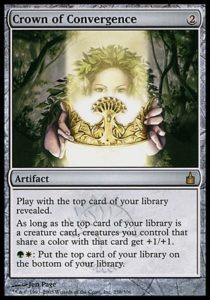
The Best?
Time will tell if Renegade Map really is as good as it purports to be. It literally goes in any deck. Any color deck can contain cards with Improvise and/or Revolt, since Improvise is in blue, black, and red and Revolt is in white, black, and green. The map is a simple design, but there’s a ton of complexity hiding just beneath the surface. Honestly, it’s one of my favorite card designs in a long while, because it interacts so simply and so perfectly with the entire format.
But that’s enough geeking out for one week. And as always, thanks for reading.
—Zachary Barash
Zachary Barash is a New York City-based game designer. He’s played Magic since 1994, but went on a long hiatus, like most folks. He’s currently pursuing his MFA in Game Design at NYU and designs for Kingdom Death: Monster, a game that is most definitely not Magic.

